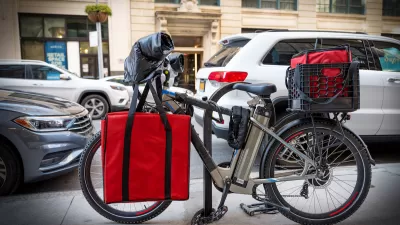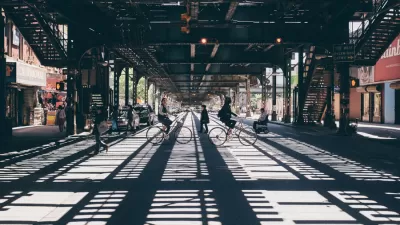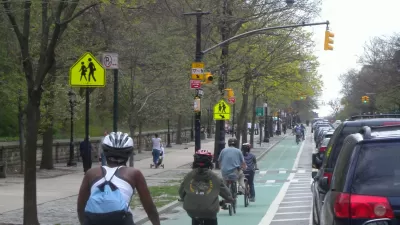As a growing number of devices fall outside of traditional vehicle classes, policymakers must decide how to classify and regulate high-speed e-bikes.

As e-bike manufacturers build increasingly fast and powerful "hyperbikes"—a term coined by Dutch builder VanMoof to describe its V model bike—policymakers must grapple with how to define and regulate the devices. As David Zipper writes,
Motorcycles and mopeds are often subject to an array of laws and restrictions that e-bikes aren’t, such as license plate mandates, helmet requirements, and special driver’s licenses. Such distinctions break down for the new class of high-speed e-bikes. After all, any two-wheeled vehicles traveling at 40 mph likely create comparable risk to the rider as well as other street users.
The e-bike market, which had been growing pre-pandemic, exploded during the last two years as people sought alternatives to public transit.
Regulations, meanwhile, have largely not kept up with the proliferation of new devices that blur the line between bicycles and the higher-powered class of mopeds and motorcycles. Federal rules in the U.S. classify e-bikes as having under 750 watts of power and top speed of 20 miles per hour, according to Zipper, but leave it up to states to regulate registration and insurance requirements.
For now, devices like the 700-watt, 37-mph VanMoof V largely fall outside of existing state and federal statutes. Advocates want to see clearer regulation, expressing concerns that leaving so many vehicles out of designated classes could lead to backlash and blanket bans on e-bikes, cargo bikes, and other forms of new mobility that, despite their usefulness, "don’t fit cleanly into the bike/car dichotomy," writes Zipper.
FULL STORY: As E-Bikes Speed Up, a Policy Dilemma Looms

Study: Maui’s Plan to Convert Vacation Rentals to Long-Term Housing Could Cause Nearly $1 Billion Economic Loss
The plan would reduce visitor accommodation by 25,% resulting in 1,900 jobs lost.

North Texas Transit Leaders Tout Benefits of TOD for Growing Region
At a summit focused on transit-oriented development, policymakers discussed how North Texas’ expanded light rail system can serve as a tool for economic growth.

Why Should We Subsidize Public Transportation?
Many public transit agencies face financial stress due to rising costs, declining fare revenue, and declining subsidies. Transit advocates must provide a strong business case for increasing public transit funding.

How to Make US Trains Faster
Changes to boarding platforms and a switch to electric trains could improve U.S. passenger rail service without the added cost of high-speed rail.

Columbia’s Revitalized ‘Loop’ Is a Hub for Local Entrepreneurs
A focus on small businesses is helping a commercial corridor in Columbia, Missouri thrive.

Invasive Insect Threatens Minnesota’s Ash Forests
The Emerald Ash Borer is a rapidly spreading invasive pest threatening Minnesota’s ash trees, and homeowners are encouraged to plant diverse replacement species, avoid moving ash firewood, and monitor for signs of infestation.
Urban Design for Planners 1: Software Tools
This six-course series explores essential urban design concepts using open source software and equips planners with the tools they need to participate fully in the urban design process.
Planning for Universal Design
Learn the tools for implementing Universal Design in planning regulations.
Ascent Environmental
Borough of Carlisle
Institute for Housing and Urban Development Studies (IHS)
City of Grandview
Harvard GSD Executive Education
Toledo-Lucas County Plan Commissions
Salt Lake City
NYU Wagner Graduate School of Public Service





























